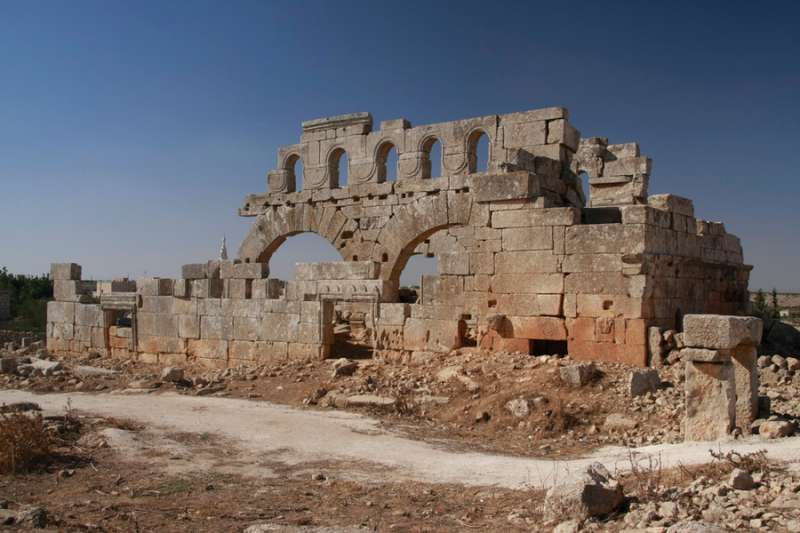A new report alleges that forces loyal to the regime of Syrian President Bashar al Assad are responsible for the majority of targeted attacks on churches since the country’s civil war began in 2011.
In a report released September 9, the Syrian Network for Human Rights says that they have evidence of the Assad regime targeting of churches, mosques, and religious sites in Syria between March of 2011 and September of 2019.
“While the regime claims that it has not committed any violations, and that it is keen on protecting the Syrian state and the rights of minorities, it has carried out qualitative operations in suppressing and terrorizing all those who sought political change and reform, regardless of religion or race, and of whether this causes the destruction of the heritage of Syria and the displacement of its minorities,” said, SNHR chairman Fadel Abdul Ghany on Monday.
The report identifies several attacks on religious targets, included bombings of houses of worship that were not near any military installation or equipment, and the transformation of houses of worship into centers for military operations.
The report, entitled “Targeting Christian Places of Worship in Syria is a Threat to World Heritage,” is the result of more than eight years’ work in Syrian towns and villages and obtaining reports from people on the ground and from activists, SNHR said. Sources included firsthand accounts of attacks, medical personnel who treated casualties and victims, and local activists with documented evidence of the attacks.
SNHR report presented a list of 124 attacks on Christian “places of worship” since March of 2011.
Seventy-five of the attacks—60 percent—came from pro-Assad forces against 48 separate Christian sites. Those forces included the Syrian army, security forces, local militias, and Shiite foreign militias.
Thirty-three of the attacks were reportedly conducted against 21 houses of worship by factions of the armed opposition; 12 attacks were conducted by extremist Islamist groups including ISIS and Hay-at Tahrir al Sham.
The Aleppo governorate saw the highest number of attacks on Christian churches, according to the report, followed by the Homs governorate and then the Damascus suburbs.
The Syrian regime forces were responsible for the highest number of attacks in the Homs governorate, with 27 incidences, and a further 20 incidents in the Damascus suburbs. Opposition forces were responsible for 24 incidents in the Aleppo governorate, according to the report.
The targeting of churches in Syria falls within the “wider context” of military forces “targeting the vital centers” of opponents, Ghany told reporters on Monday. Those targets also include other civilian institutions, including hospitals and schools.
Bishop Nicholas James Samra of the Melkite Eparchy of Newton told CNA that “the situation is very convoluted” in Syria and urged caution in interpreting the report's findings.
Samra said that many Christians in the region still see Assad as the best prospect for their their own security.
“The big fear of the Christians—the majority—is if he [Assad] goes, who will come in? And that is the big, big fear”
While both sides targeted Christian churches, the Assad regime attacked these sites more effectively with better weapons, the report claimed.
According to evidence taken from several of the attacks—shrapnel, photo analysis, determination of which forces were controlling the area at the time of the attack—the regime was found to have attacked more churches despite a greater capacity to target specific facilities, and a lesser chance of accidentally hitting a church while shelling a neighborhood.
The regime also systematically justified attacks on churches by publicly saying they had become operation centers for opposition forces, Erica Hanichak of Americans for a Free Syria told reporters on Monday.
Speaking to CNA, Smara said that in his own travles to the country and contact with local Christians led him doubt the report's conclusions.
“I doubt very much if the regime of the Assad regime is responsible for the bombing of any churches and religious sites,” he said.
“I don’t believe the president is that radical”
The report said that some churches suffered multiple attacks; the Church of the Lady of Peace in Homs was attacked seven times by Syrian government forces, and the Church of Saint Takla in the Damascus Suburbs was attacked four times.
The armed opposition attacked the Roman Orthodox Church of the Holy Cross in Damascus four times, as well as churches in Aleppo during fighting with the regime forces there in 2012 and 2013.
Some churches were attacked several times by multiple entities; the Armenian Church of Independence in Raqqa was attacked three times, twice by ISIS and once by Syrian regime forces. The Church of St. Samaan in the Aleppo suburbs was attacked once by Syrian regime forces, once by the al Nusra Front, and once by factions of the armed opposition.
Six of the attacks by regime forces were in response to attempts to turn churches into military installations; ISIS did that twice with churches, the report noted.
In July, Pope Francis sent a letter to Assad, imploring him “to protect the lives of civilians and preserve the main infrastructures, such as schools, hospitals and health facilities” in the province of Idlib where the regime forces had been fighting rebel forces.
Regime forces had been blamed for the bombing of civilian targets, including markets and hospitals, and of using chemical weapons against civilian populations.
Michelle Bachelet, the UN High Commissioner for Human Rights, has previously drawn attention to the targeting of civilian buildings by the regime, calling it “highly unlikely” that such attacks were accidental.
Pope Francis’ July 22 letter said that “what is happening” in Idlib “is inhuman and cannot be accepted.”

